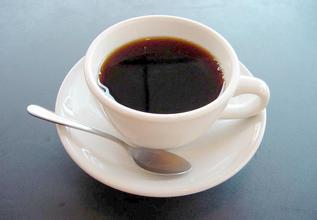El Salvador coffee flavor taste characteristics boutique coffee bean manor production area introduction to Renas Manor
Salvadoran coffee is not very famous, and low-key coffee can only be found through deliberate search. The best quality coffee here is mainly exported to Germany, which alone shows the good quality of coffee, because the German, who has always been famous for its rigour, has a very high demand for coffee quality.
Although the area of El Salvador is small, it has dozens of volcanoes, and it is the country with the highest volcanic density in the world, so it is called the "country of volcanoes". The average elevation of the country is high, and this geographical environment is very conducive to the growth of coffee. The western part of the country near Guatemala is the main coffee producing area. Coffee is the most important export of this small country, even accounting for about half of its foreign exchange earnings. The best coffee brands are Pipil and Pacamara: Pip is the Aztec Mayan name for coffee; Parkmara is a hybrid of Pacas coffee and Marrago Rippi coffee, which are also popular in the international market. When it comes to Pakamara, you have to introduce Pacamara Manor. In Ecuador in 1984, the fascists could buy the Pakamara Coffee Garden as the new owner. The Falesco family has been growing coffee in the Apaneca mountains since their grandparents for more than a hundred years. Urgado wanted to take a different path from his grandparents and decided to plant a new species, Pacamara, which had just been developed from the agricultural technology unit of Saudi Arabia. He found that this new species had a large and beautiful appearance, and could show a good flavor and aroma under excellent local conditions. He found new hope and found the rising star in his mind, but the first harvest turned out to be the beginning of hard work.
Pacamara bean shape is too large, in the treatment field for peeling and separation, often stuck in the holes or gaps of the machine, the machine must be adjusted from time to time to deal with separately. Due to the limited initial output of Pacamara, coupled with the fact that there are few large seeds in the country, most washing plants lack experience in dealing with large coffee fruits, not to mention extra sieves with larger mesh to specially deal with Pakamara species, so they are naturally reluctant to deal with new species. The problem of wet treatment after harvest will not be solved until 1990 when the Awasan Cooperative released its goodwill and was willing to sign a contract with Ecuador. After Urguado has no worries, with more skilled planting techniques, harvesting coffee cherries with the same maturity, and careful post-harvest treatment, finally make the Pacamara species of Pacamara estate shine! I won the 24 place in 2003, the seventh place in 2005 and the runner-up in 2008, when I and Japan's Maruyama Coffee jointly awarded the runner-up batch.
The introduction of new varieties is always a hard and high-risk attempt, not to mention the high probability of failure. If it succeeds, everyone will follow, but if we do not try to innovate, we will never wait for the chance of success. The sufferings of coffee farmers are not enough.

Important Notice :
前街咖啡 FrontStreet Coffee has moved to new addredd:
FrontStreet Coffee Address: 315,Donghua East Road,GuangZhou
Tel:020 38364473
- Prev

Rich and mellow taste the coffee flavor of Santa Barara Manor in Honduras the characteristics of the manor producing area
Honduras has a tropical climate and the coastal plains have a tropical rain forest climate. The annual average temperature is 23 ℃; the rainfall is abundant, and the annual precipitation in the northern coastal zone and mountain windward slope is as high as 3000 mm. There will be fish rain in some areas between May and July, because tornadoes form on part of the sea surface of Honduras between May and July. Tornadoes roll the fish in the sea to the sky and partly to the ground.
- Next

A slightly sweet and floral Ecuadorian coffee estate with a taste of flavor and taste characteristics
Western coastal areas: including coastal plains and foothills, east high west low, generally below 200 meters above sea level, there are some hills and low mountains 600~700 meters above sea level. Tropical rain forest climate, the southernmost start to transition to a savanna climate. The annual average precipitation decreases from more than 3000 mm to about 500 mm from north to south. The Andes range from Colombia to Ecuador.
Related
- Does Rose Summer choose Blue, Green or Red? Detailed explanation of Rose Summer Coffee plots and Classification in Panamanian Jade Manor
- What is the difference between the origin, producing area, processing plant, cooperative and manor of coffee beans?
- How fine does the espresso powder fit? how to grind the espresso?
- Sca coffee roasting degree color card coffee roasting degree 8 roasting color values what do you mean?
- The practice of lattes: how to make lattes at home
- Introduction to Indonesian Fine Coffee beans-- Java Coffee producing area of Indonesian Arabica Coffee
- How much will the flavor of light and medium roasted rose summer be expressed? What baking level is rose summer suitable for?
- Introduction to the characteristics of washing, sun-drying or wet-planing coffee commonly used in Mantenin, Indonesia
- Price characteristics of Arabica Coffee Bean Starbucks introduction to Manning Coffee Bean Taste producing area Variety Manor
- What is the authentic Yega flavor? What are the flavor characteristics of the really excellent Yejasuffi coffee beans?

